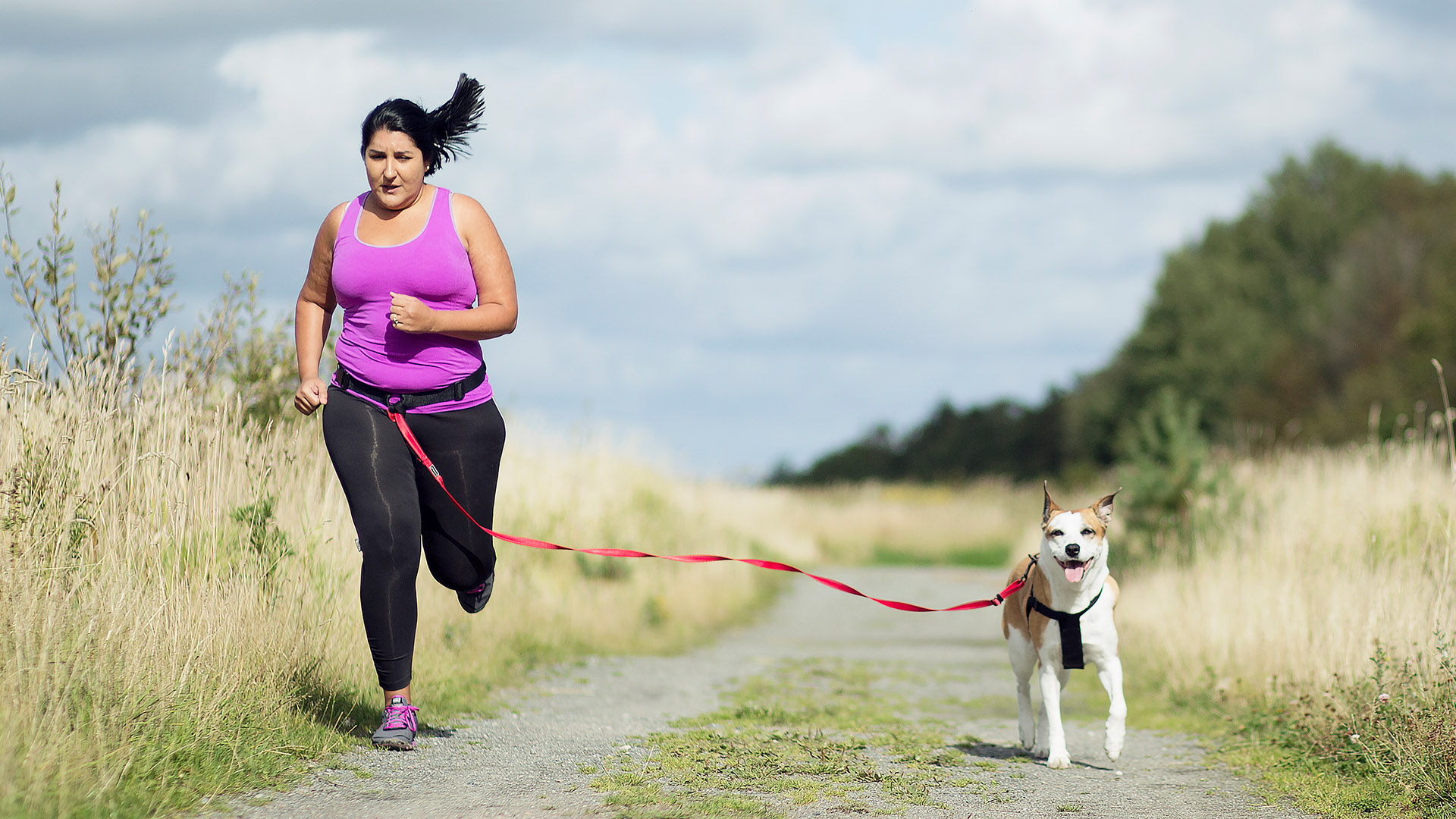Know how to safely exercise with your dog using these four simple tips from an expert
Keep your pup fit andhealthy – but safe, too!

Whether you already take a keen interest in fitness or you’re planning to do more exercise in 2025, you might be wondering how you can incorporate your dog’s exercise into your workouts safely.
While you likely already enjoy putting one of the best dog leashes on your pup and heading out for a nice, long walk, there are other forms of exercises ideal for human and canine to enjoy together, but it’s important to ensure you keep safe.
Dr. Emma Scales-Theobald, a canine behaviorist and partner of dog-friendly letting agents Canine Cottages, has shared some tips for exercising safely with our dogs, so let’s take a look.
1. Work out how long the exercise should last
Think about how much exercise your dog needs. Consider factors like your dog’s age, breed, weight, and stamina, as well as the weather and the type of exercise.
Dr. Scales-Theobald explains that, generally, dogs enjoy 30 minutes to an hour of exercise, but this can vary – dogs with high stamina might need more, with elderly or injured dogs requiring less. Working breeds often need more, while toy dog breeds and small dogs need less.
As the weather begins to get warmer, remember to keep exercise sessions shorter, and kept to the cooler parts of the day.
Remember, too, that puppies’ joints are still developing, so it’s important to ensure they don’t get too much exercise while they’re still growing.
Get the best advice, tips and top tech for your beloved Pets
2. Perfect your dog’s recall
It’s important that your dog has a great recall training and knows their key commands. This means they’ll be safer and that you’ll both enjoy the workout more. If your dog gets loose, it helps to feel secure in the knowledge that they’ll come back to you.
Dr. Scales-Theobald advises teaching your dog to walk at heel, too, particularly when you’re running but also for cycling, helping them to avoid knocking you over or pulling.
3. Look out for pain and over-exertion
Dr. Scales-Theobald explains that dogs can often hide pain, particularly if they’re enjoying themselves, so watch out for potential signs like excessive panting and slowing down.
Ensure they have enough time to recover between exercises, too. When a dog over-exercises, their muscles and joints can get stressed, potentially leading to longer-term issues. Cardiovascular and respiratory issues can develop, too, particularly in elderly, overweight, and short-muzzled dogs, and in hot weather, when dogs can overheat. Here’s how to avoid dog heatstroke for more information.
4. Consider the best time to feed your dog
Think about your dog’s feeding schedule. While eating before exercise can give your dog more energy, wait 30 minutes to an hour between eating and exercise to reduce the risk of stomach problems. If your pup’s breed is prone to bloating, it’s better to wait at least two hours.
As for feeding your dog after exercise, you might want to wait at least an hour to prevent them from eating too quickly and becoming bloated. Dr. Scales-Theobald advises, “It might also be important to give your dog their food in a puzzle feeder to encourage them to eat slower.”
If you’d like to try your pup with some tasty, natural treats to accompany their exercise routine, why not offer them these natural treats for dogs you can feed from your kitchen? Or check out our guide to the best long-lasting dog chews.

Adam is a freelance journalist specialising in pets, music and culture, and mental health and wellbeing. He investigates and writes the large majority of news on PetsRadar, and collaborates with veterinary experts to produce informative pet care content.
Adam has a journalism degree from Southampton Solent University and a masters degree in Magazine Journalism from Cardiff University. He was previously senior editor at dog advice website DogTime.com, and has also written for The Independent, GoodToKnow and Healthline.
He owns two rescue cats, Bunny and Dougie, and has also previously had a rabbit, fish and Roborovski dwarf hamsters.
